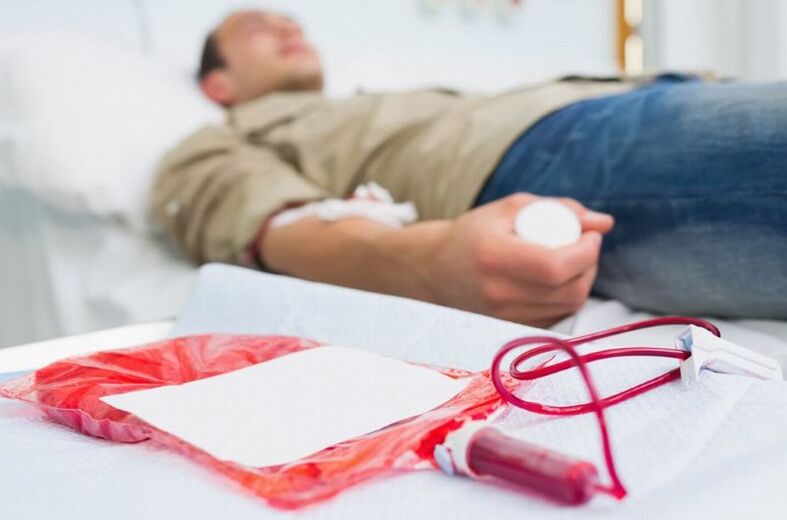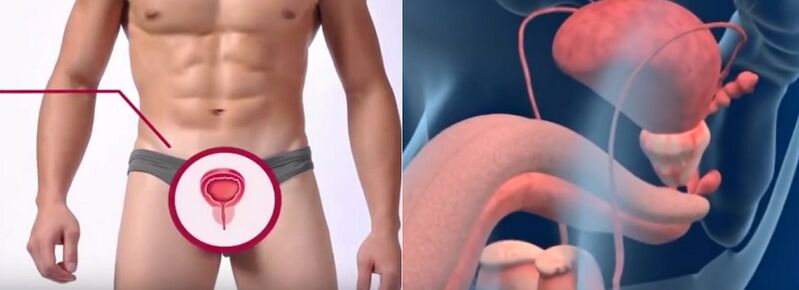Under prostatitis, urologists understand the process of inflammation of the prostate gland that occurs due to various reasons. The prostate belongs to the genitourinary system and is surrounded by other organs and tissues, so symptoms, especially in the initial stages, do not define the disease. Let's try to find out the first signs of prostatitis that may indicate the onset of the disease and tell you where to seek help.
Signs of chronic nonbacterial prostatitis
The disease occurs due to trauma to the prostate tissue or due to the influence of many other factors:
- A sedentary lifestyle and accompanying blood microcirculation disturbances;
- backflow of urine to the prostate;
- Narrowing of the lumen of the urethra due to tumors, stones, or inflammation;
- a sharp contraction of the pelvic muscles;
- Hypothermia, smoking, alcoholism.
Symptoms of this form appear gradually and their severity increases over time. At first, men may complain of frequent urination, along with a burning sensation in the urethra.
At this stage, prostatitis can be confused with urethritis, so laboratory diagnosis is important.
As the inflammatory process progresses, other signs of disease appear in the prostate tissue:
- want to urinate at night;
- Perineal pain (may radiate to the head of the penis, anus, thighs, and lower abdomen);
- no or weak erection;
- pain during ejaculation;
- Body temperature rose to 37. 5-37. 8°C.
Blood may be observed in urine or semen if the integrity of the prostate tissue or the area adjacent to the urethra is violated. Men notice the scarlet or brown patches.
Signs of acute bacterial prostatitis
Bacterial prostatitis is caused by pathogenic and opportunistically pathogenic microbiota. Microorganisms can live in a person's gut or skin, and if hygiene regulations are not followed, they can enter the prostate through the urethra and grow rapidly in the glandular tissue. Another option is for the pathogen to enter the urethra and then the prostate during unprotected intercourse. An incorrect prostate biopsy can also lead to infection.
Once on the mucosa of the prostate, bacteria develop rapidly and colonies grow in as little as 2-3 days. In this case, the first signs of prostatitis will be:
- chills, fever, fever;
- pain in the perineum, lower back, or lower abdomen;
- Urinary irregularities (pain, intermittent urine flow, frequent urges).
The disease progresses in the absence of treatment or an incorrect treatment strategy. After a few days, constipation, acute urinary retention, and pain in muscles, joints, and lymph nodes may occur. Signs of poisoning are also possible - nausea, vomiting, weakness.
The interval between the first symptoms and the most significant clinical presentation may be 3-4 days.
Signs of Chronic Bacterial Prostatitis
The chronic form of bacterial prostatitis occurs in the acute course of improper treatment, as well as due to bladder trauma and illiterate catheterization. The transmission of inflammatory processes in adjacent organs to the prostate is not excluded.
A person may ignore the first signs of chronic prostatitis - this form of symptoms is characterized by mild severity with possible periods of remission. The disease can be suspected by:
- urination problems;
- Pain in the perineum;
- Erection problems.
Periods of exacerbation alternate with periods of calm. A person may mistakenly consider a cure without seeing a doctor. This attitude is dangerous - the inflammatory process develops, the prostate tissue regenerates, and the organ loses its function. As a result, prostatitis can lead to infertility and cause sepsis - blood poisoning.

pathological clinical manifestations
Prostatitis has no characteristic symptoms and it can be confused with other diseases with similar symptoms - cystitis, urethritis, chlamydia.
Knowing the first signs of the disease will not help make an accurate diagnosis. Emphasis on clinical manifestations is more effective.
For acute bacterial prostatitis, the following signs are characteristic and are found on urine and blood tests and laboratory tests:
- Anal body temperature is 0. 5°C higher than axillary body temperature;
- Increased number of white blood cells in the urine;
- Decreased number of eosinophils;
- Increased C-reactive protein;
- Increased PSA levels in the blood.
A blood test for PSA levels is not mandatory, but can help provide a clearer picture of the pathological process.
How to provide first aid and who to contact for treatment
Prostatitis is a disease that does not threaten the patient's life in the early stage. You can take pain relievers for severe pain, but this is an exception. It is best not to drink such pills, as they may blur the clinical picture and prevent doctors from making a correct diagnosis. Antipyretics can be taken to fight high fever.
Provide first aid in a medical facility using competent methods. For this, men must contact the urologist at the place of residence or stay. If for some reason you cannot see a doctor on your own, you will need to call an ambulance.
Self-administration of antibiotics is strictly prohibited.
These drugs are prescribed taking into account the type of pathogen, and uncontrolled intake increases bacterial resistance and aggravates the manifestations of intoxication.
Consequences of ignoring the first signs
Most men are reluctant to visit a doctor, especially when it comes to urogenital problems. This attitude can be dangerous. Prostatitis is a serious condition that can have negative consequences:
- transition to a chronic form that is virtually incurable;
- the development of infertility;
- spread of infection to nearby organs;
- reduced potency;
- occurrence of sepsis.
The latter situation directly threatens the patient's life. The probability of a fatal outcome is 30-50% and increases by 8% for every hour of delay in medical care.

add up
Knowing the first signs of prostatitis in men can help to suspect a problem in the body. A more accurate diagnosis is made based on instrumentation and laboratory studies of blood and urine. Prostatitis is life-threatening for a man, so self-treatment is not acceptable. If you put off seeing a doctor, the disease can become chronic, which is very difficult to deal with.















